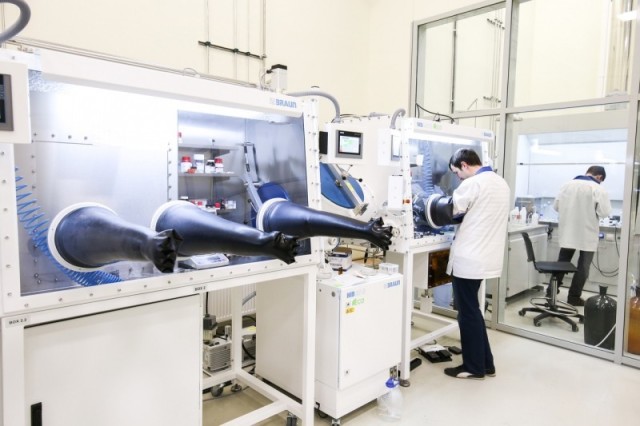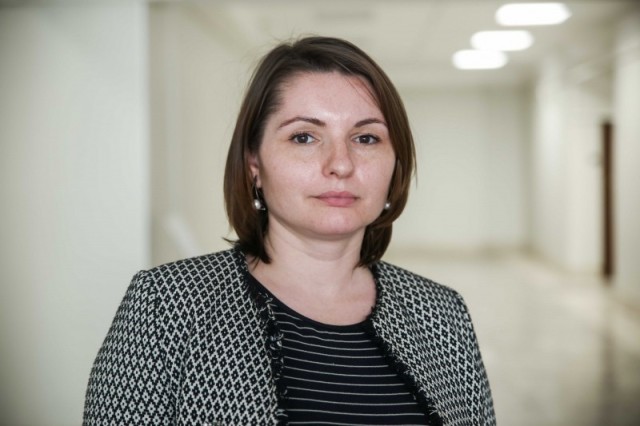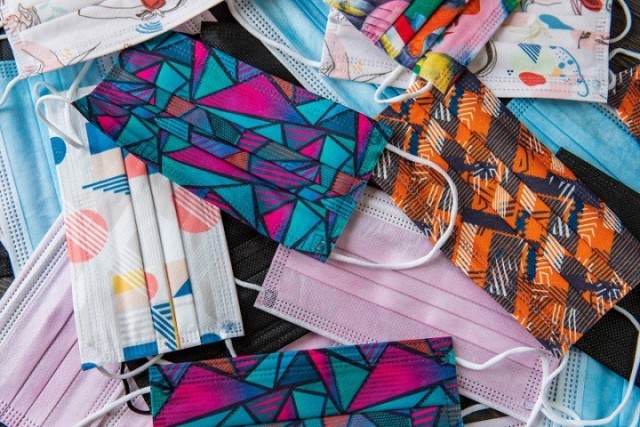How are high-tech materials for electronics, energy and textile industries being created in Russia today, what developments are St. Petersburg scientists ready to offer and what will happen to their projects next? This was not only discussed at a press conference at the TASS office in St. Petersburg. Heads of strategic projects, experts from St. Petersburg universities told what scientists face when working in these fields, and what solutions are possible in the new conditions. The main theses are in the ITMO.NEWS material.
The press conference was attended by the Director of the engineering center of ITMO UniversityVictoria Zheltova, Associate Professor at the Institute of Physics, Nanotechnology and Telecommunications of Peter the Great St. Petersburg Polytechnic UniversityRoman Burkovsky, Head of the Department of Micro- and Nanoelectronics of St. Petersburg State Electrotechnical University "LETI"Viktor Luchinin, Professor at St. Petersburg State University of Industrial Technologies and Design, Head of the Smart Textile Strategic ProjectElena Sashina and Associate Professor of the Department of Materials Engineering at St. Petersburg State University of Industrial Technologies and Design, Director of the Center for Technology Transfer and Competence FashionTech program "Priority-2030" Olga Moskalyuk.

Materials for flexible electronics
Over the past 10 years, technologies for flexible electronics have been actively developing in the world. Various technology corporations are already working on smartphones that can be bent twice, or TV-rolls that do not lose their properties even after they are literally rolled into a tube. For example, in 2021, the Chinese company OPPO introduced the concept of a smartphone with a roll screen OPPO X 2021. Russian scientists also work in the field of flexible electronics. In particular, the laboratory of flexible electronics and thin-film photovoltaics (FlexLab) was established at ITMO five years ago.

As the head of the ITMO engineering center Victoria Zheltova emphasizes, her employees are engaged in both the study and development of materials for flexible electronics and photovoltaics, as well as the testing of these technologies and the creation of prototypes of really working devices. For example, specialists are working on photodetector materials, inks for various displays, sensor layers for temperature monitoring, namely, they are developing compositions for such materials, methods of their application and measurement.
Also recently, the laboratory has been actively engaged in the subject of image sensors. Among the potential applications of such devices are fingerprint sensors and X―ray detectors. Moreover, the field of use of the latter is wide: X—ray inspection of products is used in various industries - in aviation, engine building, shipbuilding, nuclear power engineering, pipe industry and in the construction and operation of pipelines.
In addition, we are working with LED and color converters for displays. FlexLab ITMO already has its own technologies for the synthesis of a new generation of perovskite quantum dots. According to Victoria Zheltova, such materials give greater brightness and efficiency, and therefore it is promising to use them to create various displays.
Materials science and new types of memory
One of those areas in which Russian scientists have a huge accumulated base and a serious reserve for the future is materials science. In particular, as the head of the Department of Micro- and Nanoelectronics of LETI Viktor Luchinin emphasized, in the technology of growing artificial diamonds, Russia surpasses foreign countries in its capabilities.
The advantage can also be achieved through the development of silicon carbide technology, which has been working on at LETI for more than half a century. Many prospects have been associated with this area in recent years. For example, silicon carbide (SiC) diodes have already penetrated the rapidly developing market of inverters for solar-powered power systems.

Silicon carbide. Photo: Matthias Renne / wikipedia.org (CC BY-SA 3.0)
The St. Petersburg Polytechnic University, which, as the associate professor of the Institute of Physics, Nanotechnology and Telecommunications Roman Burkovsky mentioned, has historically been famous for its work in the field of metallurgy, is actively engaged in nanotechnology today. As an example of current developments, he cited the work on new types of ferrom memory. Ferroelectric random access memory (FRAM) is similar in its design to dynamic random access memory (DRAM). But to ensure non-volatility, FRAM uses a ferroelectric layer instead of a dielectric layer, as in DRAM.
Smart Textiles
Fashion Tech is not only about what color will be fashionable this season or what style of trousers should no longer be worn. The textile industry today is a whole complex of technologies aimed, among other things, at the development of new functional materials. Associate Professor of the Department of Engineering Materials Science of SPbGUPTDOlga Moskalyuk She noted that textile materials with electrically conductive properties are already being created at the university. The scope of their application is quite wide: these are insulators, antistatic products (the same PPE or packaging), means of protection against electromagnetic radiation.

Photo: Anton / Unsplash
In general, SPbGUPTD conducts research on coloring, synthesis of new finishing substances and special finishing of textiles. According to Elena Sashina, head of the Department of Chemical Technologies named after prof. A. A. Kharkharov, the university has already developed a composition based on metal oxide nanoparticles, as well as a way to fix it. Thanks to this composition, the fabric acquires photochromic (light-sensitive) structural coloring, as well as the ability to self-clean under the influence of sunlight. Such a fabric is promising to use, in particular, in the interior and for car interiors.
Another direction in which they work at the university is the creation of materials with a stable antibacterial and antifungal finish. As an example, Elena Sashina demonstrated a mask made of such a material ― according to the expert, its properties are preserved even after repeated washings.
Import substitution: what difficulties scientists have encountered and how to solve them
Not only the market, but also researchers have to rebuild their work in new conditions. According to Roman Burkovsky, he and his colleagues would not like to give up long-term cooperation with foreign specialists, but now they are also looking for new opportunities for collaborations within the country. For example, Russian specialists have serious competencies in the field of crystal cultivation ― developments since the days of the Soviet Union, and now researchers have again become actively engaged in this area.
If we talk about the textile industry, it is most difficult to replace the raw material base here, Olga Moskalyuk believes. There are factories in Russia that produce certain fiber-forming polymer materials, but until now they were made mainly from imported components. Therefore, as Olga Moskalyuk stressed, the issue of low―tonnage chemistry deserves special study, including at the government level - these are pigments, catalysts, raw materials for special fibers, engineering plastics and individual chemical reagents.
Among the "bottlenecks" that should be overcome in order to really develop the knowledge-intensive sector and apply scientific developments in industry, Viktor Luchinin called the issue of establishing systemic ties between corporations. Now, as experts note, everyone essentially acts autonomously.
